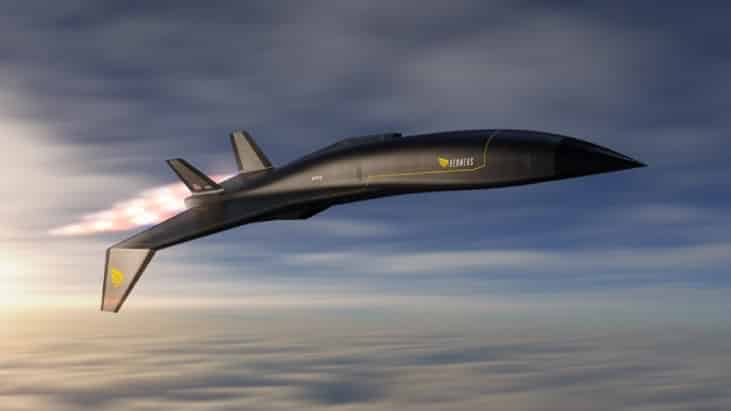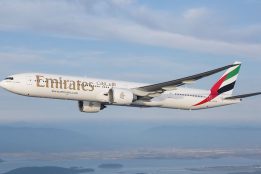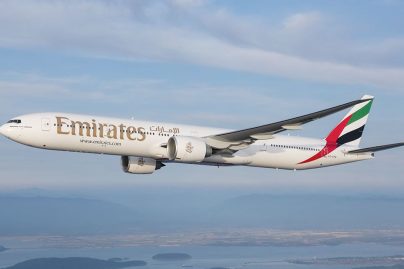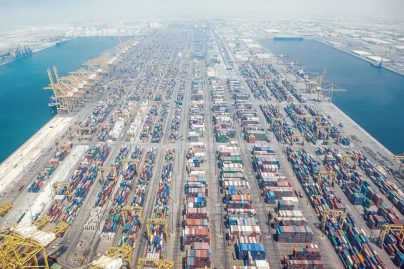That was once a dream in terms of travel is now close to reality!
Sun 17 Oct 2021
Almost two decades ago, Concorde retired, interest in supersonic travel has picked up the pace, and several are in development. Airlines seem interested: United has already committed itself to offer supersonic routes as early as 2029.
But what about hypersonic travel, which happens at speeds of Mach 5, five times the speed of sound, and above? That would get an aircraft from New York to London in just 90 minutes, compared to about three hours for Concorde, and between six to seven hours for a regular passenger jet.
Hermeus, an Atlanta-based startup whose goal is to develop hypersonic aircraft, believes so. It’s already testing a new type of engine it says will eventually be capable of reaching Mach 5 (over 3,000 miles per hour). The engine is designed for a small, unmanned hypersonic aircraft Hermeus is currently creating for the US Air Force, but scaled to a bigger size, it will be able to power a passenger plane.
That passenger plane is a long way away, Hermeus hopes to get it in the air for the first test flight before the decade is out, in 2029, but because its technology has to be built almost entirely from the ground up, the company is already planning it out.
For a start, it will be much smaller than current airliners and even Concorde, which had a capacity of around 100 passengers.
“To help us size the aircraft, we basically built a business model for an airline,” said AJ Piplica, CEO of Hermeus. “We focused on the business class and first-class travelers, and then played around with some parameters such as speed and operating costs. What came out of that was an aircraft with a 20-passenger cabin,” he added.
That’s not far from the capacity of a large business jet, which means there will be just one class.
“We expect it to be profitable at today’s business class prices,” said Piplica, with the caveat that it’s hard to gauge how much people will be prepared to pay to fly five times faster, because “you can’t really answer that question until there’s a product out there and you have the real data.”
The range of the plane will be about 4,000 nautical miles, enough for transatlantic routes such as New York to Paris, but not for transpacific routes like LA to Tokyo, which would require a stopover.
Routes over land, such as New York to LA, are out of the question due to noise regulations: breaking the sound barrier comes with a loud boom, which usually must happen over water.
To understand how daring the idea of a Mach 5 passenger plane is, it’s useful to look at flight speed records.
The fastest any aircraft with an engine has ever flown is Mach 9.6 (about 6,800 miles per hour), a record set in 2004 by the NASA X-43A, an unmanned aircraft measuring about 12 feet in length.
Because that flight only lasted a few seconds, the record for the longest sustained flight above Mach 5 belongs to the Boeing X-51, another unmanned experimental aircraft, which in 2013 flew for over three minutes at Mach 5.1 (about 3,400 miles per hour). Both aircraft had to be launched from altitude by a B-52 bomber, and then brought up to speed by a rocket, highlighting the intricacies of these types of high-speed flights.
For aircraft with humans on board, the current absolute speed record is Mach 6.7 (4,520 miles per hour), set in 1967 by the X-15. It was a rocket with a seat, designed to achieve the record, and also had to be launched from altitude by a B-52.
Hermeus is planning to fund itself by developing various aircraft on the way to its passenger plane, similarly to SpaceX’s development of its Falcon 1, Dragon, Falcon Heavy, and Starship rockets, which ultimately serve a vision of interplanetary spaceflight while also generating revenue by working with NASA and commercial partners.
“There’s nothing like Hermeus, although many similar projects have come and gone in the past,” says Richard Aboulafia, an aviation analyst at Teal Group. “It never seems to work out. If they can magically create a hypersonic transport in the late 2030s, and the ticket price is in the business class range, then yes, that will be successful. But the odds of this happening are somewhere in the 1% range.”
If and when a hypersonic passenger plane will become a reality, what will it be like to fly on it?
“It’ll be pretty similar to Concorde. You’ll be accelerating for a longer period than you do on today’s aircraft, where you feel pushed back in your seat for about 30 seconds to a minute or so. That experience will last for maybe 10 to 12 minutes. But once you’re up at Mach 5, at 100,000 feet or so, it’ll be a smooth ride. There’s not a lot of air traffic up there, and the atmosphere is relatively benign,” said Piplica.
Source: Agencies

 Apr 19 2024
Apr 19 2024













